It rained heavily; the forecast was for more but clear tomorrow. I would walk in the rain but Ailine and David were not keen, instead opting to drive to Grahamstown to free up tomorrow. I agreed as it was only 170km according to David. Once on the road I saw that was to PE with a further 130 to Grahamstown. We were committed by then and it made sense in a way.
The only interest in the rural farming area we passed through are the amazing lush green paddocks.
Grahamstown is important to me for several reasons. It’s one of the first towns settled by UK immigrants in 1810, before the main party in 1820, my father’s forebears. The 1820 Settlers National Monument and Art Centre, built in 1964/68, overlooks the city to commemorate the event. My 1st year University was here at Rhodes, also our 1st year of marriage, and the birth of Karen, in 1965. Today we visited all the places that held significance for me.
The Settlers in the UK were encouraged to emigrate by fables of the wonderful pastures and climate in the Cape but found Algoa Bay (Port Elizabeth) uninviting. A sand, mud and rocky place on the edge of a wild windy almost treeless bay. The land was infertile, and hard. Only the Coega river ameliorated the tough life ahead. People had brought inappropriate flat packed timber homes and furnishings like pianos. And while the native Xhosa were initially friendly, battles broke out over cattle and grazing rights leading later to frontier wars. Nature in the form of elephants, leopards, baboons and other wildlife were also a problem.
Our first stop was the 1820 Settlers Monument overlooking the city. On my visit in 1987/8 we bought prints of paintings by those people, so I expected more than we found, but the building is more an arts centre and theatre; Settler information was nowhere to be seen. We were guided through it for 15 minutes by the informative reception guy.
I attended Rhodes in 1965, travelling from the mine in Mashaba in Rhodesia with Phil from Gatooma who studying for ministry. We had a stopover in Jo’burg with my sister to break the long two day journey (2000km). I have no idea how I found Phil. I stayed the first few nights in an old hotel on High Str near the Uni. I registered for Geology with the other hundreds of students in the intimidating main entry hall through the arch off High Street. Queues formed in front of labelled tables for the various faculties; ‘Arts’ ‘Science etc. My turn came: ’‘What are you registering for?” “Geology Sir” “So you will also do Chemistry, Physics, and Maths – Next!’
Accommodation was difficult, especially at the price I could afford. I searched the Uni notice boards and Town Hall for a room and eventually found a dark front room, to the right of the entry of a very small Railway house, 2 Anderson Str., at the opposite end of the High Street from the Uni at the edge of the city, near the cemetery and railway station. But the old couple were good to me; one Saturday we drove down to Kowie (Port Alfred) in his Austin A30. On my 15 minute walk to lectures I noticed an Indian guy just a block away also going to Uni, so we would chat on the way. It was unusual for an Indian to attend a European Uni and I thought the apartheid very wrong. The Rhodesian government had tribal chiefs in Parliament. (I only recently recalled the address so the photo is from google; It is now a Day-care).
By this time I was in need of a haircut and persuaded Hilary to do it, but a blunt scissors is not sufficient; the result was embarrassing. On Monday I crept up High Street to a barber near the Cathedral who had to do a very short cut.
Hilary came down about two months later, but the accommodation was clearly unsuitable. I enquired again about a room and discovered Vicky’s advert on a Uni board. A junior lecturer, she and a tall pom had bought an old 5-bed house at 20 Francis Street, backing onto the railway, and were letting the other three rooms. Two were already taken so we were left with the large extension room on the left side. It was probably a dining or living room and we loved it; a yellow timber floor, high ceiling, a door off the front veranda, and tall sash windows on all three external walls. In contrast to the current dark room, this was filled with light. Rent was more than for the other rooms and we had to furnish it. A bed of course and colourful curtains, which Hilary made using a borrowed machine. All six of us shared the kitchen and bathroom. The railway passed about 3m behind but we became used to it. Hilary and I saw the house on a visit in 1988 and it was still a student home, but today it looks like a family home with a playground and garage.
Vicky was a very nice Jewish woman, about 30. She had a room at the back, the other front room was occupied by the tall pom. His fees were paid by the Zambian government as he was a policeman. He even had all his gear including a rifle. Another we called the mad bomber as he was very left, studying Arts of course. The last was a studious quiet woman from Wellington near Cape Town. Across the road in a small house on the edge of a school playing field lived a single woman with kids. She had a few chooks and a rooster. Towards the end of year exams, the pom found the crowing too much so one afternoon he shot at the bird, watched by us from our door. He missed and we hastily hid in our rooms. A few minutes later we heard a knock on the door. Our pom played the innocent ‘A shot! At your rooster! No I’ve been studying. Didnt hear a thing’. We could hardly contain ourselves. The pom moved to temporary rooms at the uni.
Daughter Karen’s home-coming could have been a disaster; instead it was welcomed by all. Vicky took many photos, the mad bomber babysat, the pom took a mild interest, and the student helped as she found time. It was a difficult year but memorable. I am grateful to those four and wish we could catch up.
We returned to Rhodesia with Phil in his little mini. He rigged a rope under the boot lid tied to holes in the roof gutters as support for several cases including a steel trunk stacked on it to window height! Hilary and I could hardly move we were so tightly packed. And Karen slept most of the time in her carrycot on top of packs next to Hilary on the back seat. It was the day of Ian Smith’s Declaration of Independence in Rhodesia – but that’s another story.
Today I walked alone into the great intimidating hall, then through the arch, down High street past the Cathedral of St Michael & St George, my bank (Standard), the Town Hall, and right into Bathurst Str to search for a building in which we considered renting a room before 20 Francis Str. The room was upstairs, at the back, a roughly enclosed veranda, draughty and not weather tight; now it is the Observatory Museum, next to the Frontier Hotel, opened on 2 February 1982. It was originally a 19 century jewellers shop and family home, connected with the identification of the Eureka (the first authenticated diamond in the country in 1867). The roof dome houses a Camera Obscura, the only one in the country.
By this time David and Ailine were waiting for me. Another quick stop at the 1820 Monument to shoot the town from the hill, attempting to capture 20 Francis Str, in the increasingly poor rainy afternoon light, to return to Storms River. (The house is hidden behind trees, between a red roof on the right, and green on the left, and behind the cricket pavilion overlooking the green field.)
It was disappointing to see much of this city so dirty and run-down.
Dinner tonight was at the very upmarket, beautiful Tsitsikamma Village Inn; the meal was delicious!

1820 Settlers Monument 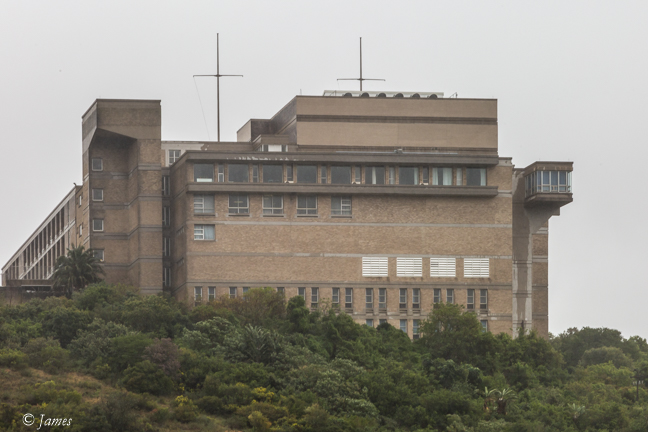


20 Francis Str 
View from house 
View from house 
2 Anderson Str 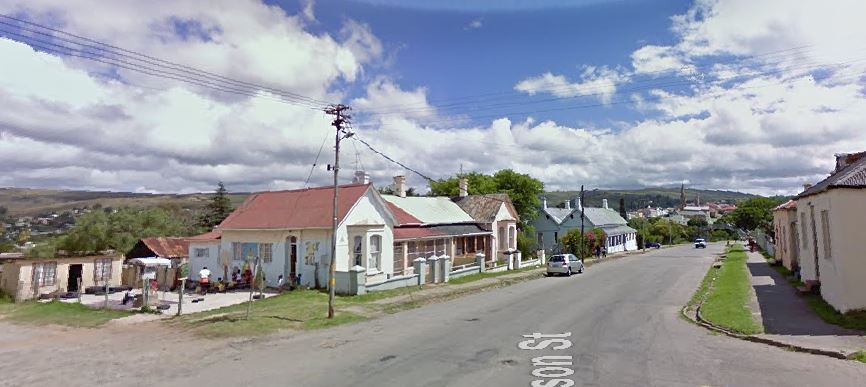
2 Anderson Str 
Uni Arch 
High Str 
Rhodes Uni 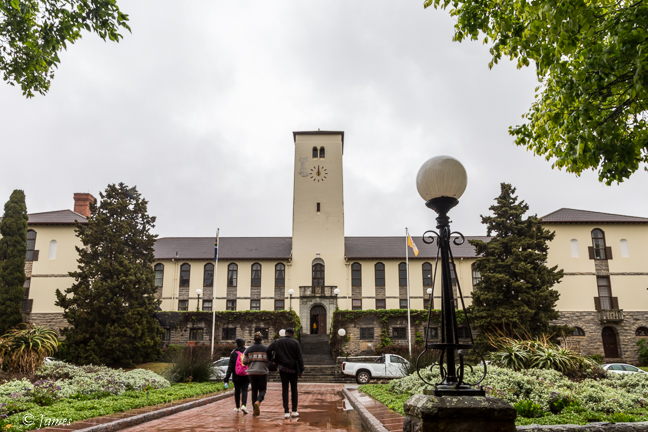

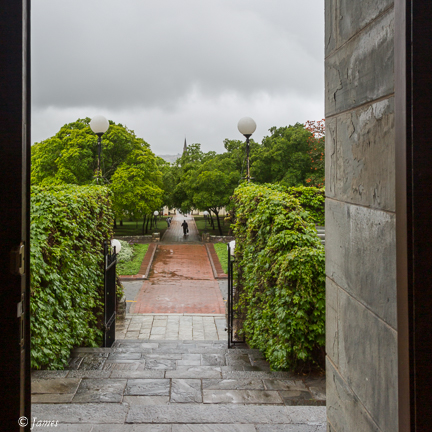
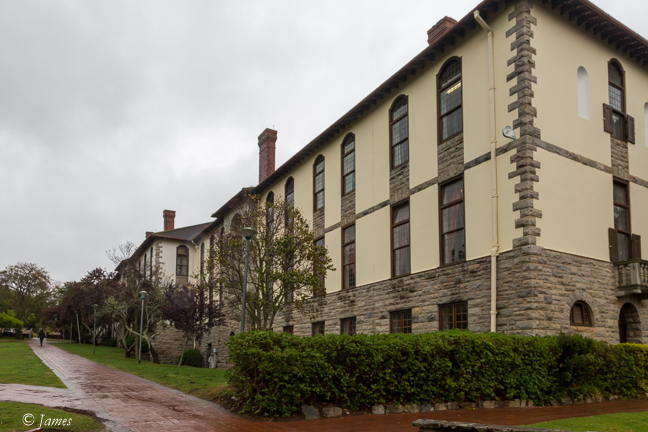

Post Office 
Cathedral of St Michael & St George 
Cathedral of St Michael & St George 

Standard Bank 
High Street (barber) 
Town Hall 

Room to let? 
20 Francis Str central far left above large red roof bldg 
20 Francis Str

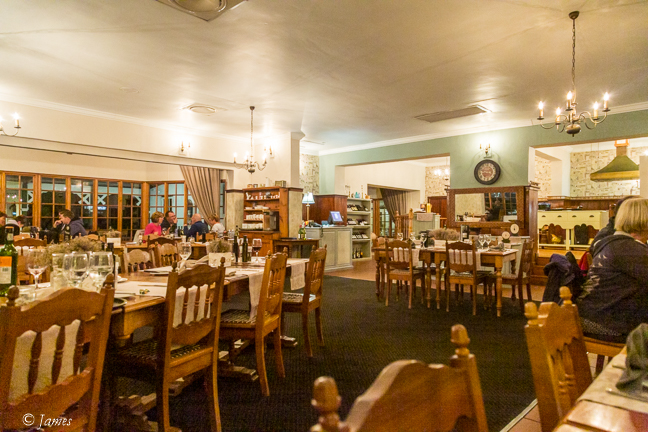
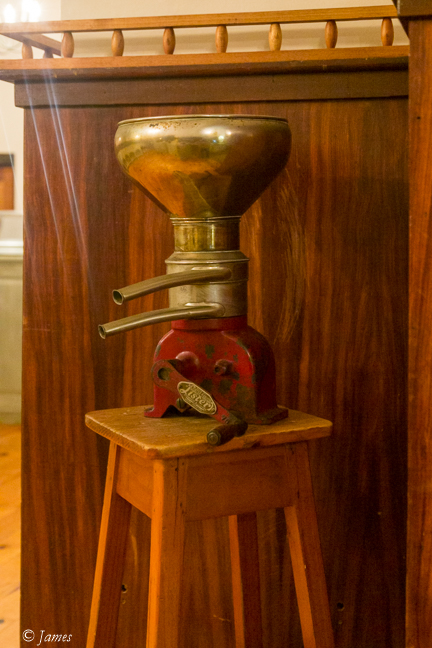
Milk separator

oh wow so awesome that you got there are got to see all those places. how amazing! it’s a shame to lose contact with people. pity there was no face book in those days, otherwise you would have been able to keep in contact with them. It’s so nice to have all those memories.